Benthic Macroinvertebrates: Stream Messengers
Benthic Macroinvertebrates: Stream Messengers
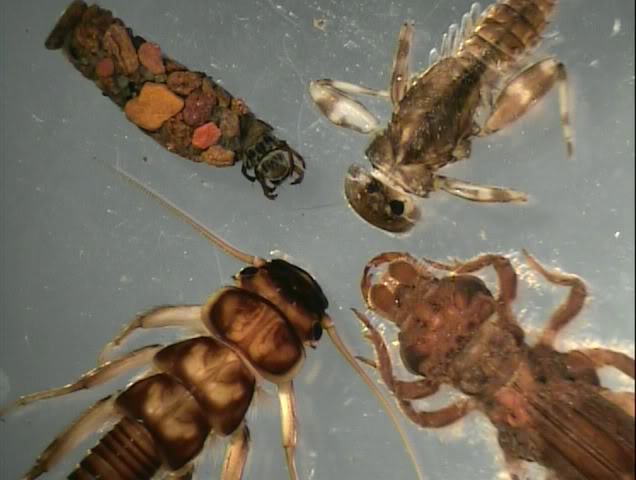
Credit: Josh Adkins
Clockwise from top left: Stonefly, Caddisfly, Mayfly, and Dragonfly Larva.
Aquatic Animals with a Mission
Benthic macroinvertebrates are small animals (but not microscopic) that do not have bones and that live in streams, rivers, lakes, and ponds. You've most likely encountered one in the form of a dragonfly, mayfly, worm, snail or even a crayfish.
These tiny creatures play an important role in freshwater ecosystems. Many are highly sensitive to water pollution, making them excellent organisms to study the biology of local streams and rivers.
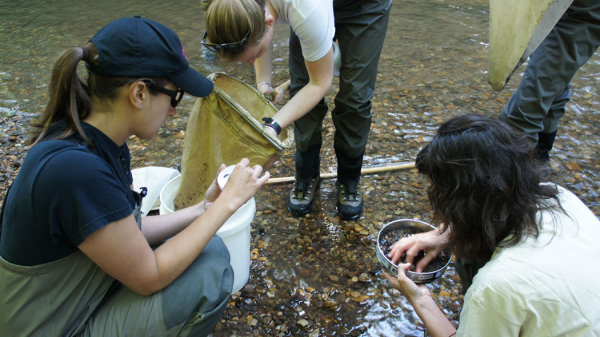 Macroinvertebrate sampling
Macroinvertebrate sampling
Meet Some Macroinvertebrates
Streams are home to many benthic macroinvertebrate groups, including insect larvae, mussels, clams, snails, leeches, worms, and crayfish. Each of these groups has a general tolerance or sensitivity to pollution, and it is this sensitivity that makes benthic macroinvertebrates so useful to scientists.
Here are some examples of macroinvertebrates you might find by flipping over rocks in streams:
Stoneflies, Mayflies, and Caddisflies
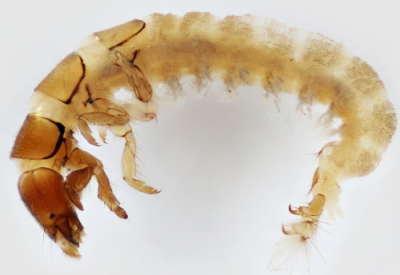
Caddisfly

Mayfly
Dragonflies and Damselfies
The larva of these insects are predators who eat other insects and small fish. Dragonflies tend to be more sensitive to pollution than damselflies, and depending upon the species, can be found in all kinds of streams and rivers
Hellgrammites
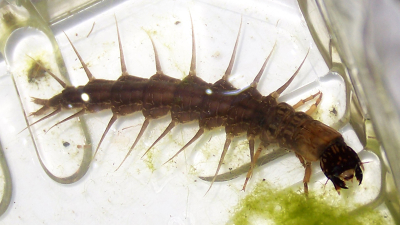
Hellgrammite
Mussels and Clams
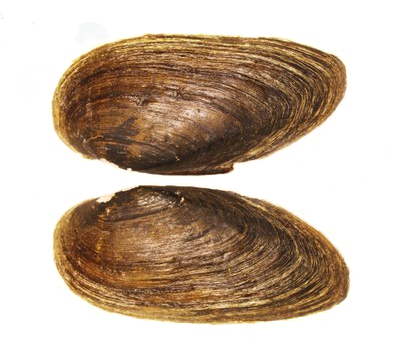
Mussel
Worms and Leeches
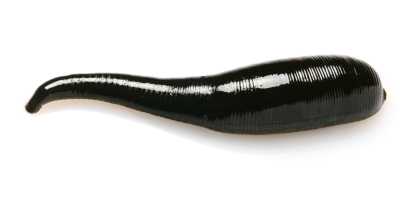
Leech
Crayfish

Crayfish
To see more pictures of these benthic macroinvertebrates and others, visit www.macroinvertebrates.org.
Special Critters
Benthic macroinvertebrates can tell scientists a lot about a stream's health . Scientists use these small water-loving organisms as "bioindicators" for many reasons.
- They can be collected relatively easily.
- They spend all or most of their life cycles in the stream.
- They don't move far from where they call home in a stream.
- They have different sensitivities and tolerances to pollution.
- Each kind prefers certain stream temperatures and types of stream bottoms.
Streams with a lot of different kinds of benthic macroinvertebrates are usually very healthy. Unhealthy streams will have only a few benthic macroinvertebrates or a lot of only a few kinds.
Benthic macroinvertebrates are an important part of a food web in and out of the stream. Some eat bacteria, algae, or plants, while some eat other animals. They help break down wood and leaves in the streams into smaller pieces, which float downstream for other animals to eat. Macroinvertebrates are also eaten by other animals such as fish, amphibians, and birds.
Ways to Learn More
Watch SRBC scientists collect macroinvertebrates
SRBC scientists who study bioindicators are called Aquatic Biologists. Learn more about the projects that SRBC’s Aquatic Biologists and other Environmental Scientists are doing .
Check out the Alliance for Aquatic Resource Monitoring (ALLARM) website. You can join the volunteer network and learn how to monitor your local streams.